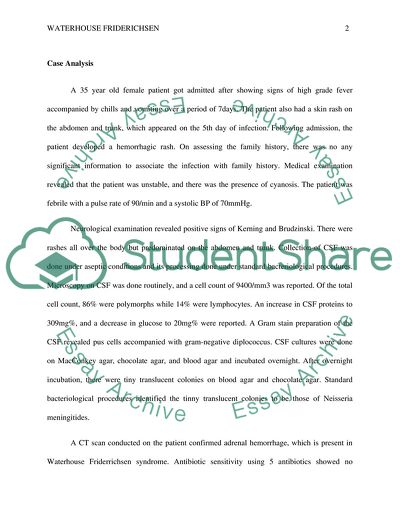Cite this document
(“Waterhouse Friderichsen Essay Example | Topics and Well Written Essays - 2250 words”, n.d.)
Waterhouse Friderichsen Essay Example | Topics and Well Written Essays - 2250 words. Retrieved from https://studentshare.org/nursing/1605877-waterhouse-friderichsen-note-please-focus-on-these-systems-associated-organs-systems-with-dysfunction-adrenal-glanddickidneys-liver-short-description-of-the-association-of-the-primary-with-at-least-two-other
Waterhouse Friderichsen Essay Example | Topics and Well Written Essays - 2250 words. Retrieved from https://studentshare.org/nursing/1605877-waterhouse-friderichsen-note-please-focus-on-these-systems-associated-organs-systems-with-dysfunction-adrenal-glanddickidneys-liver-short-description-of-the-association-of-the-primary-with-at-least-two-other
(Waterhouse Friderichsen Essay Example | Topics and Well Written Essays - 2250 Words)
Waterhouse Friderichsen Essay Example | Topics and Well Written Essays - 2250 Words. https://studentshare.org/nursing/1605877-waterhouse-friderichsen-note-please-focus-on-these-systems-associated-organs-systems-with-dysfunction-adrenal-glanddickidneys-liver-short-description-of-the-association-of-the-primary-with-at-least-two-other.
Waterhouse Friderichsen Essay Example | Topics and Well Written Essays - 2250 Words. https://studentshare.org/nursing/1605877-waterhouse-friderichsen-note-please-focus-on-these-systems-associated-organs-systems-with-dysfunction-adrenal-glanddickidneys-liver-short-description-of-the-association-of-the-primary-with-at-least-two-other.
“Waterhouse Friderichsen Essay Example | Topics and Well Written Essays - 2250 Words”, n.d. https://studentshare.org/nursing/1605877-waterhouse-friderichsen-note-please-focus-on-these-systems-associated-organs-systems-with-dysfunction-adrenal-glanddickidneys-liver-short-description-of-the-association-of-the-primary-with-at-least-two-other.


